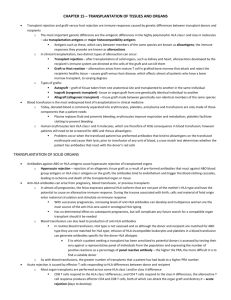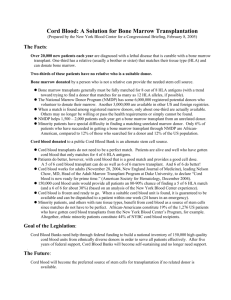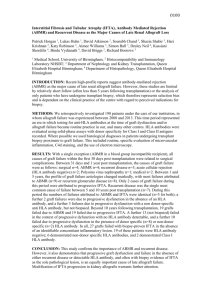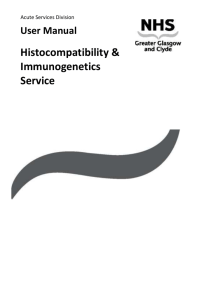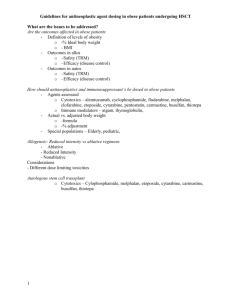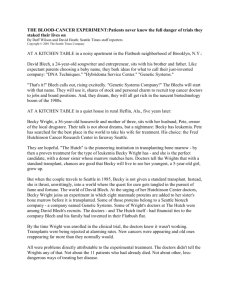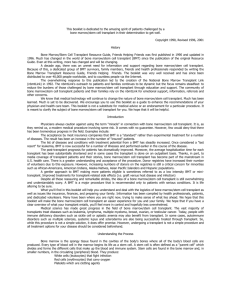word format
advertisement
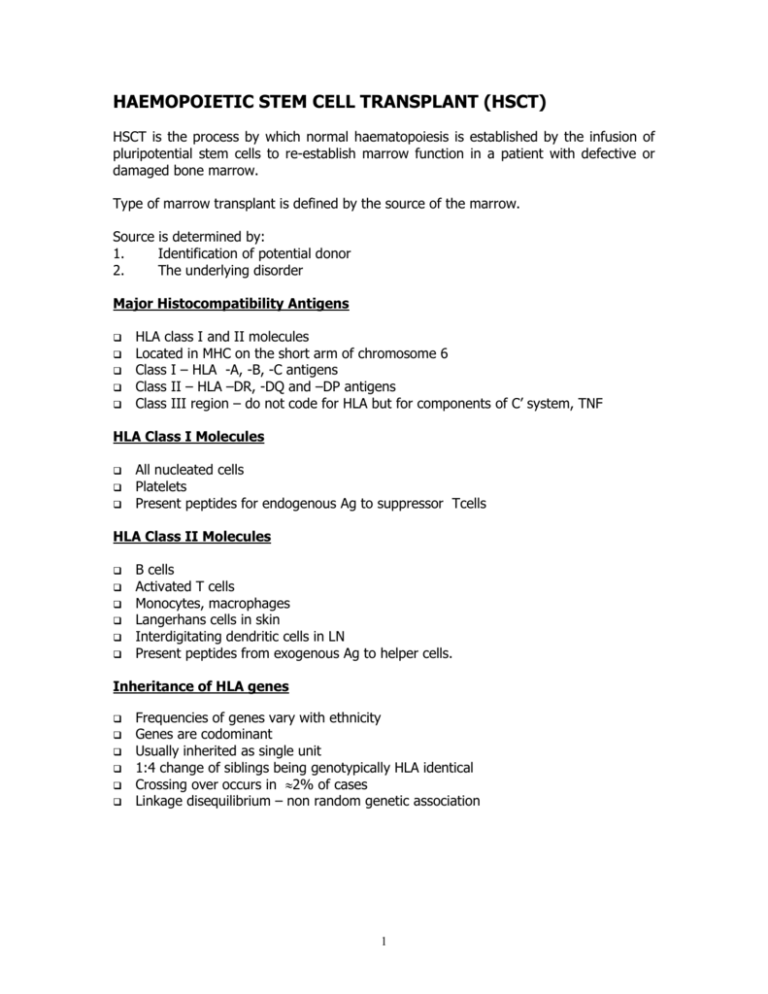
HAEMOPOIETIC STEM CELL TRANSPLANT (HSCT) HSCT is the process by which normal haematopoiesis is established by the infusion of pluripotential stem cells to re-establish marrow function in a patient with defective or damaged bone marrow. Type of marrow transplant is defined by the source of the marrow. Source is determined by: 1. Identification of potential donor 2. The underlying disorder Major Histocompatibility Antigens HLA class I and II molecules Located in MHC on the short arm of chromosome 6 Class I – HLA -A, -B, -C antigens Class II – HLA –DR, -DQ and –DP antigens Class III region – do not code for HLA but for components of C’ system, TNF HLA Class I Molecules All nucleated cells Platelets Present peptides for endogenous Ag to suppressor Tcells HLA Class II Molecules B cells Activated T cells Monocytes, macrophages Langerhans cells in skin Interdigitating dendritic cells in LN Present peptides from exogenous Ag to helper cells. Inheritance of HLA genes Frequencies of genes vary with ethnicity Genes are codominant Usually inherited as single unit 1:4 change of siblings being genotypically HLA identical Crossing over occurs in 2% of cases Linkage disequilibrium – non random genetic association 1 Types of Transplant 1. 2. Allogeneic/syngeneic Autologous A. Syngeneic Donor + recipient are identical twins Ideal except in genetic disorders Limitation – limited availability of identical twins B. Allogeneic Related matched Donor usually a sibling Identical class I & II HLA Ag 25% chance of having HLA identical sibling C. Allogeneic unrelated matched Serologically identical MLC negative Phenotypically identical HLA locus Genotypically dissimilar D. Partially mismatched related E. Haplo identical Only one common HLA complex (Experimental) F. Autologous Patient and donor are the same Allows administration of myeloablative regimes Liability - reinfusion of malignant cells - absence of graft vs. tumor effect Comparison of Allogeneic and Autologous BMT Feature Allogeneic Autologous 1. Age limit 40-55 60-70 2. Primary problem in obtaining transplant Finding a closely HLA matched sibling or unrelated donor Collecting enough haemopoietic progenitor cells uncontaminated by tumor cells 3. Most serious complication GVHD Relapse of original disease 4. Anticancer effect of infused cells Proved or suspected in a number of cancers Unproved possible antilymphoma effect of peripheral stem cells 5. Use in non malignant disorders Potentially curative in both genetic and immunologic disorders Not useful until gene therapy becomes practical 2 Conditioning Therapy Immunosuppressive Create space for graft Elimination of malignant cells Conditioning regimens Chemotherapy e.g. cyclophosphamide alone or in combination (+ busulphan, and etoposide) Total body irradiation – usually combined with chemotherapy (cyclophosphamide) Marrow Harvest Sterile procedure Anaesthetised donor Multiple needle aspirations from superior iliac crest 3 – 6ml/aspirate 2 x 108 – 4 x 108 nucleated cells/kg recipient body weight Suspend in anticoagulant Filter out fat, bone particles, cell clumps Transfuse in central venous line using blood transfusion set If ABO incompatible – remove red cells Risks to donor Anaemia Anaesthetic risk Post BMT Keep platelets > 20 x 109/L (use irradiated platelets) Treat all fevers as sepsis (antibiotics and antifungals) Parenteral nutrition Nurse in germ free environment Indications for Bone Marrow Transplant 1. 2. Non Malignant a. Aplastic anaemia b. Thalassemia and sickle cell anaemia c. Immunodeficiency diseases d. Other genetic disorders (fanconi’s anaemia) Malignant a. Acute leukaemia 3 b. c. d. e. f. g. h. Myelodysplastic syndromes Chronic leukaemias Multiple myeloma Lymphomas Testicular tumors Breast cancer Neuroblastoma Complications of BMT 1. Early toxicity of radiochemotherapy Reversible adverse effects Nausea and vomiting Mucositis Diarrhea Hemorrhagic cystitis Marrow aplasia (infections, bleeding complications) Alopecia Parotitis Life threatening adverse effects Interstitial pneumonia Hepatic veno-occlusive disease Congestive cardiomyopathy 2. Late toxicity of radiochemotherapy Gonadal insufficiency (sterility) Growth disturbances in children Cataracts Secondary malignancies 3. Graft rejection 4. GvHD 5. Leukaemic relapse 4 A. Infections – Causes Prolonged immunosuppression Damage to skin/mucosal barriers Cellular immune deficiency Impaired humoral immunity Neutropaenia Use of indwelling catheters Use of immunosuppressive therapy GvHD Agents of infection Bacteria - Gm+ve Fungi – usually not systemic Viral – HSV Related to neutropaenia – bacterial or fungal Later – severe humoral and cellular immunosuppression - associated with GvHD - often pulmonary infections Late post transplant – bacterial & viral infections - related to T cell dysfunction Management B. Broad spectrum antibiotics Antimycotics Antiviral agents No role for prophylactic antibiotics Infection prevention measures Use of CMV negative blood products GvHD Acute or chronic Acute <100 days post transplant graft has immunologically competent T cells the recipient has to express relevant transplantation Ag not present in donor (immunostimulant effect on donor cells) recipient is immunologically deficient (unable to destroy donor cells) Affects skin, liver and intestinal tract Host contamination by bacteria thought to be important Treat with further immunosuppression 5 Chronic More than 100 days after transplant May be arise de novo Affects skin, liver eye, salivary gland Features similar to collagen vascular disorders Treatment – immunosuppression, antibiotics, artificial tears, saliva, sun blocking cream, topical oestrogens, nutritional support C. Graft Failure Failure of engraftment or loss of an established graft May be related to insufficient stem cell infusion Post transplant therapy (antivirals, methotrexate) Post transplant infections HLA incompatibility T lymphocyte depletion Management – use of CSF - second stem cell transfusions D. Interstitial Pneumonitis Non bacterial, non fungal pneumonitis CMV is an important cause Radiation, chemotherapy – also important cause Idiopathic – likely in part related to chemotherapy and radiotherapy Treatment for CMV – ganciclovir + Ig Mortality for idiopathic group – 50-60%. Steroids may be used. PBSCT Stem cells obtained in peripheral blood (PBPC) Stem cells mobilised with growth factors Advantages Can be harvested without general anaesthetic Less likelihood of tumor contamination Faster haemopoietic recovery and immune reconstitution Cord Blood Stem Cell Transplantation First done in 1988 6 Advantages Availability Low viral infection rate Possibility of collecting blood in ethnic groups under represented in BM donor registries ?Lower risk of GvHD 7
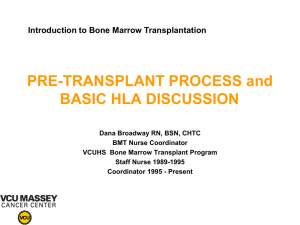
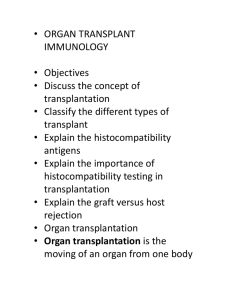
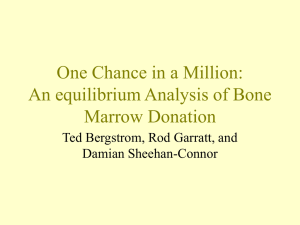
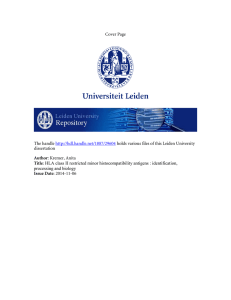
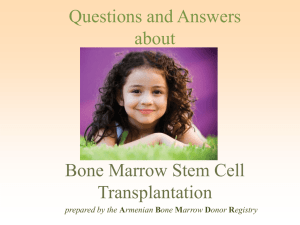
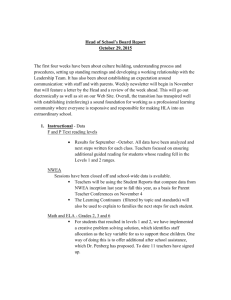
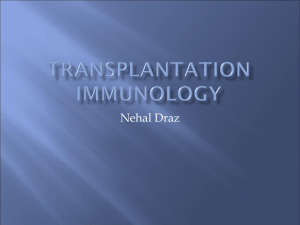
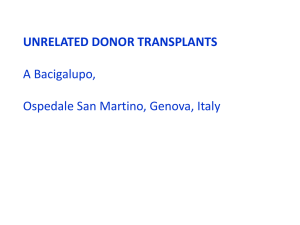
![HLA & Cancer [M.Tevfik DORAK]](http://s2.studylib.net/store/data/005784437_1-f4275bf4b78bff4fb27895754a37aef2-300x300.png)
